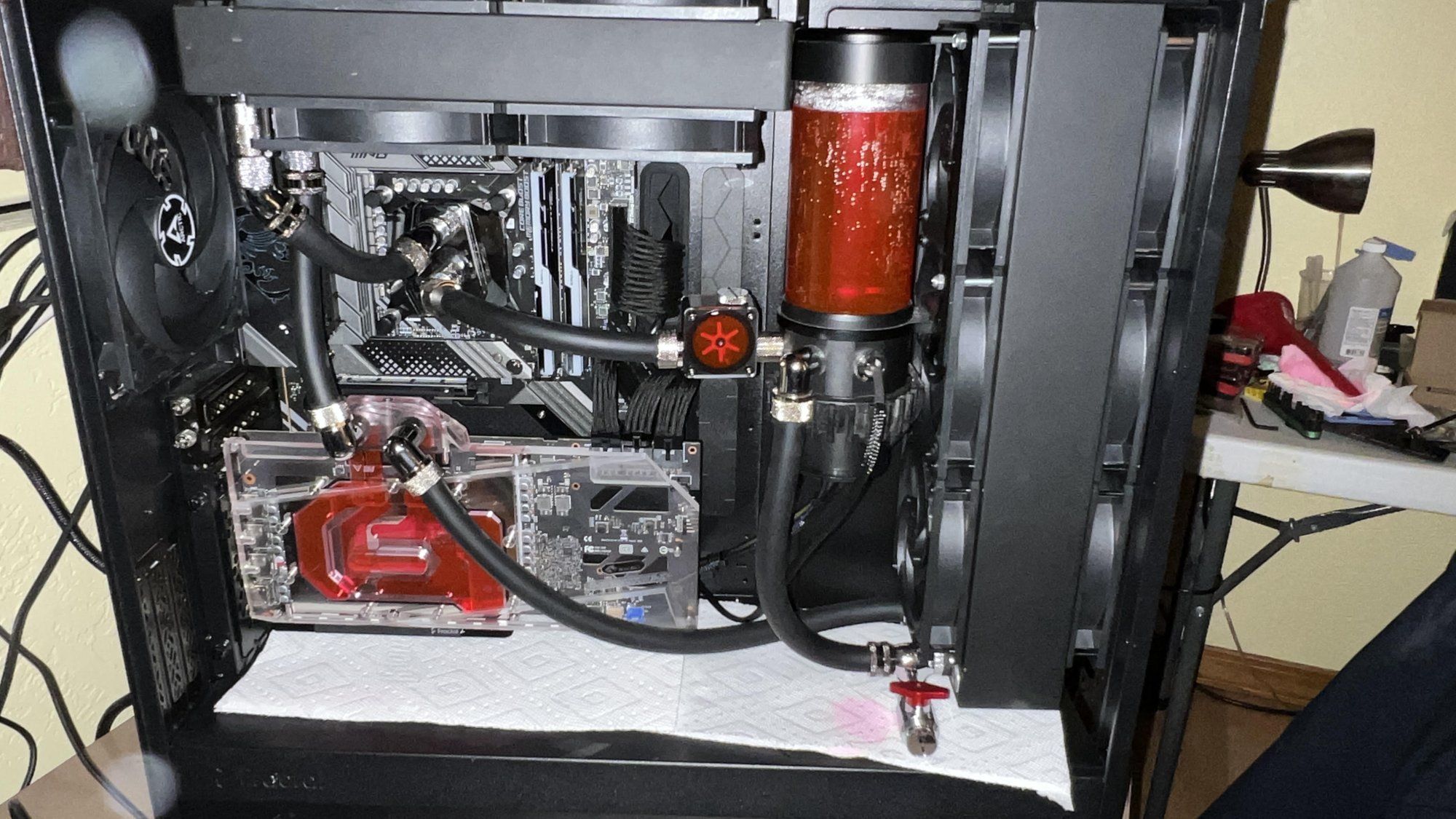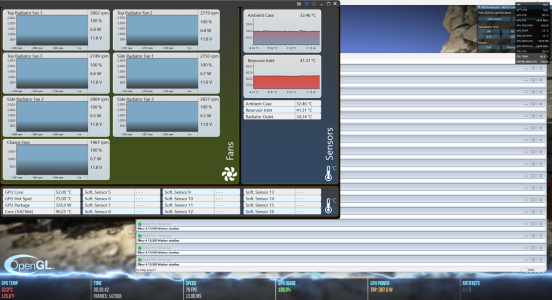Had this current custom loop set up for a bit over a year now I think, but only recently was able to get a coolant temperature probe installed. CPU and GPU temps had been what I thought to be good ( 40-50c cpu / 60c gpu ) during gaming, but my coolant temp gets to 52c during gaming. From everything I have seen, that is too high for what I have. I will list out my details to see if anyone can see an issue. Thanks
20c ambient
12900k @ 1.29v 5.1/4.0 all core
3080 EVGA ftw3 +150/600mhz
EK XE 360x60 Front Rad
EK XE 240x60 Top Rad
XSPC Photon D5 170 pump/res ( D5 is vario version, set to highest level )
Both radiators have push/pull Arctic p12 pwm fans ( 10 total ) @ 100% speed
EK black 7/16' id zero maintenance black flex tubing
Generic mechanical spinning flow meter ( spins really fast )
Temp sensor is located in secondary outlet port on the XSPC pump/res combo ( higher temp because of location close to pump? )
Let me know if there is any other information that might help figure this out.
The picture was from when the loop was set up months ago, system was thoroughly bled of air.
The front rad is intake, top rad is exhaust.
The temperature probe location can be seen in the picture as the right most fitting on the base of the reservoir.

20c ambient
12900k @ 1.29v 5.1/4.0 all core
3080 EVGA ftw3 +150/600mhz
EK XE 360x60 Front Rad
EK XE 240x60 Top Rad
XSPC Photon D5 170 pump/res ( D5 is vario version, set to highest level )
Both radiators have push/pull Arctic p12 pwm fans ( 10 total ) @ 100% speed
EK black 7/16' id zero maintenance black flex tubing
Generic mechanical spinning flow meter ( spins really fast )
Temp sensor is located in secondary outlet port on the XSPC pump/res combo ( higher temp because of location close to pump? )
Let me know if there is any other information that might help figure this out.
The picture was from when the loop was set up months ago, system was thoroughly bled of air.
The front rad is intake, top rad is exhaust.
The temperature probe location can be seen in the picture as the right most fitting on the base of the reservoir.

![[H]ard|Forum](/styles/hardforum/xenforo/logo_dark.png)

